Struggling with leg cramps? Discover if using magnesium for leg cramps can help. Compare creams, lotions, and oils, and learn why magnesium cream might be your best pick for relief. Find practical tips for easing leg cramps fast!
We have all been there, haven’t we? You are lying in bed, perfectly comfortable, and then, suddenly, your leg seizes up in a painful, stubborn cramp.
For some, leg cramps are an occasional nuisance. For others, they are a nightly ordeal. And while the causes of leg cramps vary, one potential solution has been gaining traction: magnesium. Specifically, magnesium creams.
But with so many options (aside from supplements)—creams, lotions, oils—out there, it is hard to know where to start. Does using magnesium for leg cramps make a difference?
And if it does, is a cream really the way to go? Let us dig into the details to answer these questions, cover the best options, and help you get back to more comfortable nights.
Does Magnesium Help with Leg Cramps?
Magnesium is more than just a mineral you hear about in multivitamins; it plays a key role in muscle and nerve function. So how does magnesium help with leg cramps?
When you are low on magnesium, muscles can cramp up more easily because this mineral is vital for muscle relaxation. And leg cramps, as painful as they are, could be one of your body’s ways of saying it needs some magnesium.
Studies have shown that magnesium may help reduce the frequency and severity of cramps, particularly in people who have a deficiency. However, for those who already have adequate levels of magnesium, the effectiveness might not be as noticeable.
But absorbing magnesium through the skin (topically) may be a quicker way for your body to get what it needs in targeted areas, like those cramp-prone legs.
Using Magnesium for Leg Cramps: How Does Topical Magnesium Work?
When magnesium is applied to the skin, it can be absorbed directly into the bloodstream, bypassing the digestive tract. This can be especially handy if you find that oral magnesium supplements cause stomach upset.
Many users find topical options to be gentler and easier on the stomach while potentially offering faster relief.
7 Benefits for Seniors
Seniors can particularly benefit from using magnesium for leg cramps, as it addresses some age-related issues and is often easier on their systems than oral supplements.
Here are some of the unique benefits magnesium offers older adults, especially when used in topical forms like creams, lotions, and oils:
Gentler on the Digestive System
For many seniors, oral magnesium supplements can cause digestive issues like upset stomach or diarrhea.
Using magnesium topically allows it to absorb directly through the skin, providing muscle relief without the side effects that sometimes come from taking it in pill form.
Promotes Muscle Relaxation and Reduces Cramping
Muscle cramps are common in older adults, often due to decreased mobility or a slight magnesium deficiency.
Topical magnesium can support muscle relaxation by increasing magnesium levels directly in the affected area, helping ease cramps and muscle spasms.
Improves Sleep Quality
Magnesium is known to promote relaxation and restful sleep, which can be especially beneficial for seniors who may experience insomnia or restless nights.
Applying magnesium cream in the evening can help calm muscles and contribute to more restful sleep, indirectly aiding cramp reduction.
Supports Bone Health
Magnesium plays a role in calcium absorption, essential for bone density and strength. For seniors, maintaining bone health is crucial to preventing fractures and osteoporosis.
Though topical magnesium is not a substitute for dietary intake, it can complement overall magnesium levels, supporting stronger bones.
Non-Invasive and Easy to Use
Topical magnesium is an easy, non-invasive way for seniors to boost their magnesium levels. It can be applied as part of a daily routine, like before bed, and does not require swallowing pills or undergoing injections, which may be challenging for some older adults.
Hydrates and Nourishes Aging Skin
Many magnesium creams contain moisturizing agents that are beneficial for older skin, which tends to dry out more easily. By using magnesium cream, seniors not only get cramp relief but also enjoy softer, more hydrated skin.
Potential for Faster Relief
Topical magnesium may offer quicker relief compared to oral supplements, as it bypasses the digestive system and goes directly to the muscles. This can be a big benefit for seniors who want prompt relief from sudden cramps or muscle tension.
Comparing Magnesium Creams, Lotions, and Oils for Leg Cramp Relief
With magnesium creams, lotions, and oils all in the mix, it is easy to feel overwhelmed. Let us break down each type to see which one might suit your needs best.
Magnesium Creams
- Best for: Dry or sensitive skin; targeted relief
- Why: Creams usually have a thicker texture and contain moisturizing agents, making them ideal for folks who want both skin hydration and relief. They are also less likely to leave a greasy residue, which is a huge plus if you are applying it before bed.
Magnesium Lotions
- Best for: General body use; daily hydration
- Why: Magnesium lotions are lighter than creams and absorb quickly, making them a good choice for all-over body application. If you want magnesium in your daily moisturizer, this is the option for you.
Magnesium Oils
- Best for: Maximum absorption; intense treatment
- Why: Magnesium oils are typically more concentrated, which can be effective for severe cramps. However, they can leave a bit of an oily feel on your skin and may cause itching in some people, especially those with sensitive skin.
If you are mainly dealing with leg cramps, a magnesium cream may be the perfect middle ground—it is easy to apply, absorbs quickly, and does not come with the slick texture that oils do.
But if you are open to experimenting, trying out each type can help you find your personal favorite.
Magnesium Cream for Leg Cramps: Why Some Prefer This Option
When it comes to topically applied magnesium, creams are having a bit of a moment. Why? Well, creams offer a balance of moisturizing agents and magnesium that’s great for skin hydration while also targeting muscle cramps directly.
Magnesium Cream Benefits
- Targeted Relief: Creams allow you to apply magnesium directly to the crampy areas, which may help reduce muscle tightness right where you need it most.
- Moisturizing Properties: Many magnesium creams come with added ingredients like shea butter or aloe, helping keep your skin soft while the magnesium does its magic on your muscles.
- Less Mess: Unlike oils, magnesium creams do not typically leave a greasy residue, which means you can apply them and not feel like a slip-and-slide.
Plus, if you are someone who appreciates a soothing, spa-like scent, many magnesium creams come with essential oils like lavender or eucalyptus, which can add to the relaxation factor.
Check out other articles for additional information on the use and top picks for magnesium lotion for muscle pain and magnesium oils for cramps.
Top Amazon Picks: Magnesium Cream for Leg Cramps
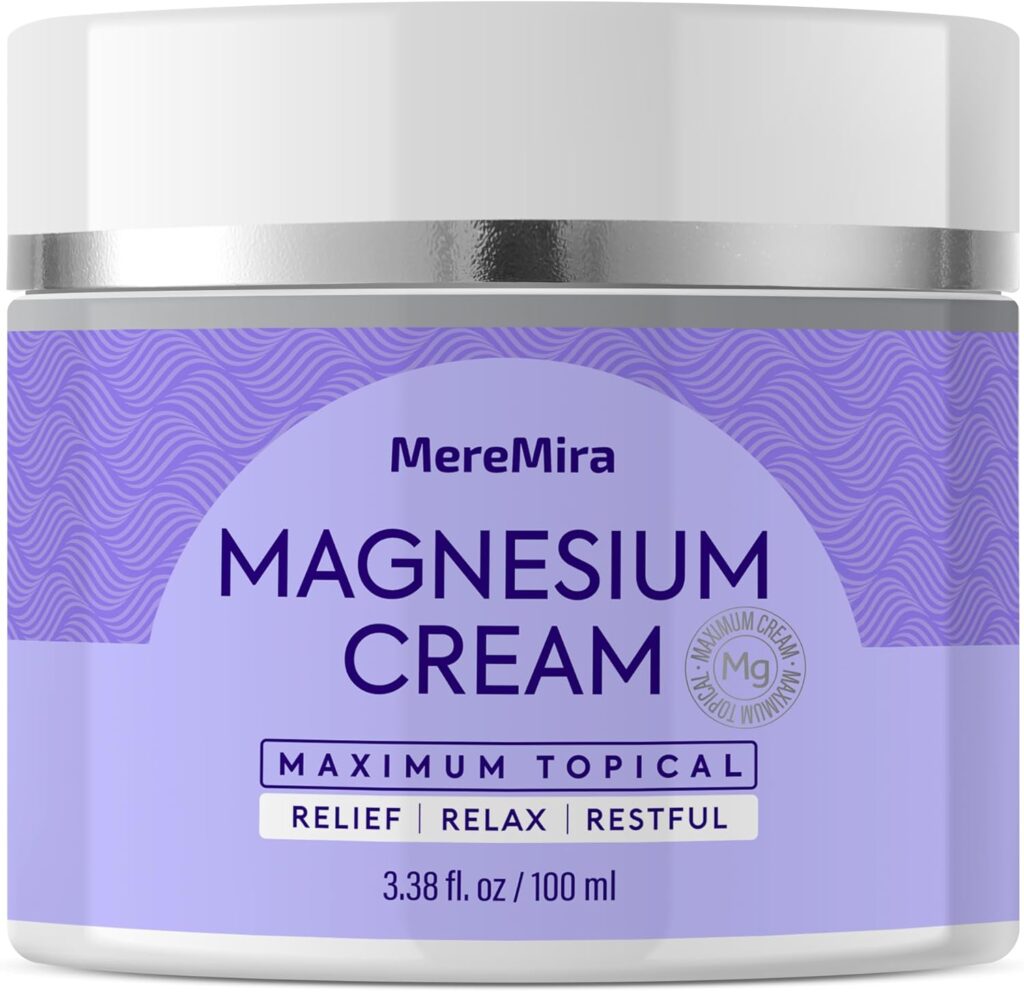
MEREMIRA Magnesium Cream for Sleep & Muscle Relief
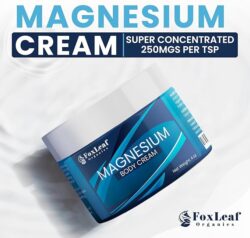
FOXLEAF Magnesium Cream – Support for Sleep, Leg Cramps, Joint Support, & Muscle Soreness
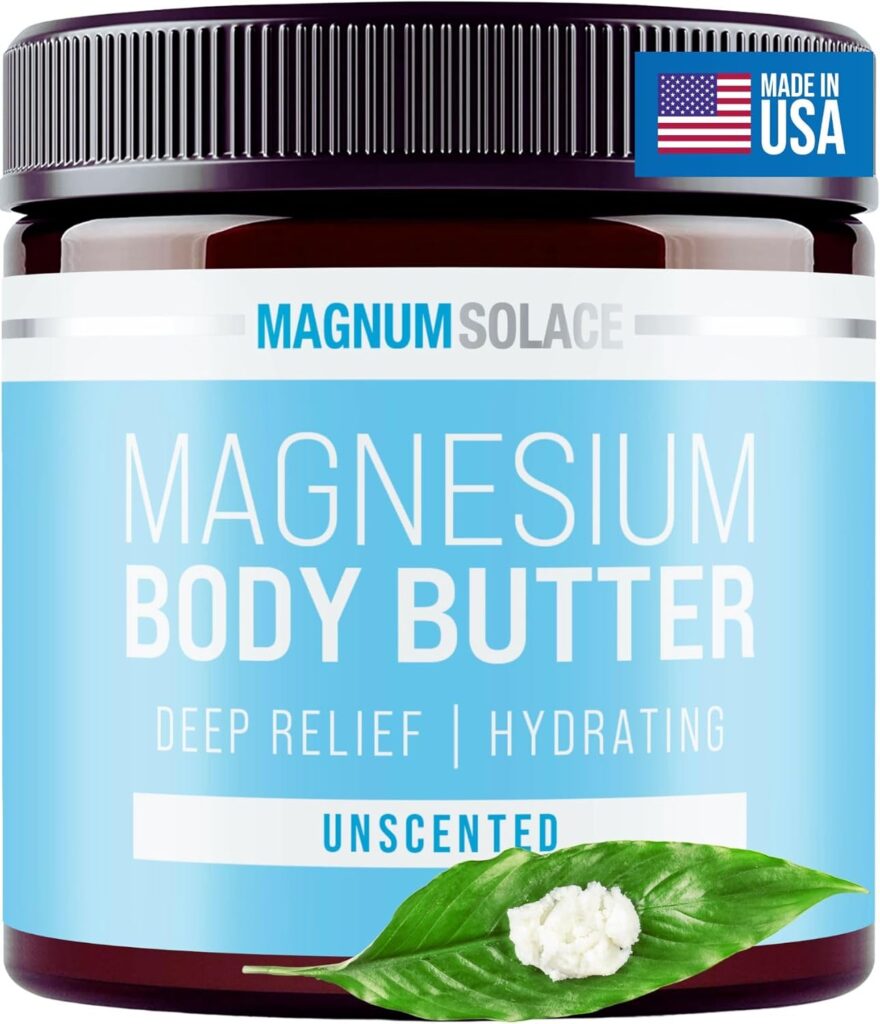
MAGNUM SOLACE Magnesium Body Butter Cream

MAGNUM SOLACE Magnesium Chloride Cream
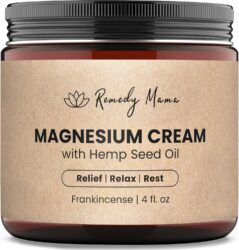
REMEDY MAMA Magnesium Cream for Sleep, Calm & Relaxation
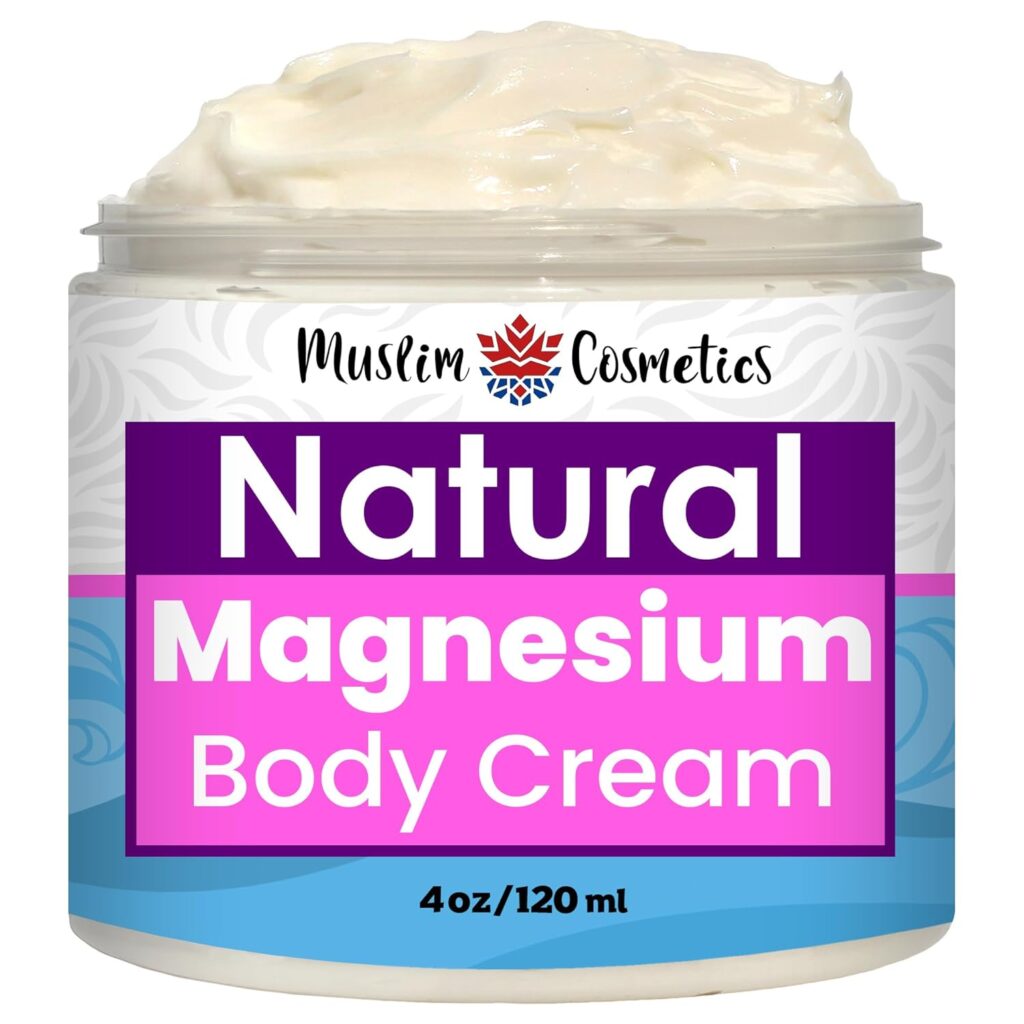
MUSLIM COSMETICS Magnesium Lotion/Cream
Practical Tips For Using Magnesium Creams for Leg Cramps
Apply Right After a Warm Bath: A warm bath helps open up the pores, which can increase magnesium absorption. Follow it up with a generous rub of magnesium cream on your calves, hamstrings, or wherever those cramps like to strike.
Use It Consistently: Don’t just wait for a cramp to pop up. Using magnesium cream daily can help maintain steady levels of magnesium in your system, possibly reducing cramps over time.
Massage it In: Take a few extra seconds to really massage the cream into your muscles. Massaging increases blood flow, which may help the magnesium reach deeper muscle tissue and provide better relief.
Spot-Test for Sensitivity: Some people experience mild tingling or itching when first using magnesium topically. Test on a small patch of skin first, especially if you have sensitive skin.
Pair with Hydration and Stretching: Magnesium alone might not be a miracle fix. Staying hydrated and doing gentle leg stretches daily can complement the effects of magnesium cream.
Conclusion – Use of Magnesium for Leg Cramps
The use of magnesium for leg cramps is worth considering, and a magnesium cream might just be the perfect solution for many.
While it is not a guaranteed fix for everyone, the science behind magnesium and muscle relaxation is solid enough to give it a try—especially if you are already dealing with cramps regularly.
Creams offer a pleasant, easy-to-use option, especially if lotions and oils haven’t quite worked for you. By applying a little magnesium cream each night, staying hydrated, and doing some light stretching, you may be well on your way to more restful, cramp-free nights.
Related Articles
- 7 Magnesium Supplements for Leg Cramps: Amazing Relief
- Magnesium Deficiency and Symptoms: Your Risks
- 7 Diseases Caused by Magnesium Deficiency: Serious Risks
FAQs about Magnesium for Leg Cramps
Can magnesium cream stop leg cramps instantly?
While magnesium cream can be effective, it may not provide immediate relief for everyone. Consistent use is key to seeing long-term results.
Is it safe to use magnesium cream every day?
Yes, for most people, daily use of magnesium cream is safe and can help maintain optimal levels of magnesium in the body.
Are there side effects of using magnesium cream for leg cramps?
Mild tingling or itching is common, especially for first-time users. If irritation persists, it’s best to stop use and consult with a healthcare provider.
What’s the best time to apply magnesium cream for leg cramps?
Applying it before bed or right after a warm bath can maximize absorption and effectiveness, helping with nighttime leg cramps.
Should I use magnesium oil vs lotion, or cream for leg cramps?
It depends on your preference and skin type. Creams are ideal for targeted, non-greasy application, while oils are more intense but can leave a residue.

